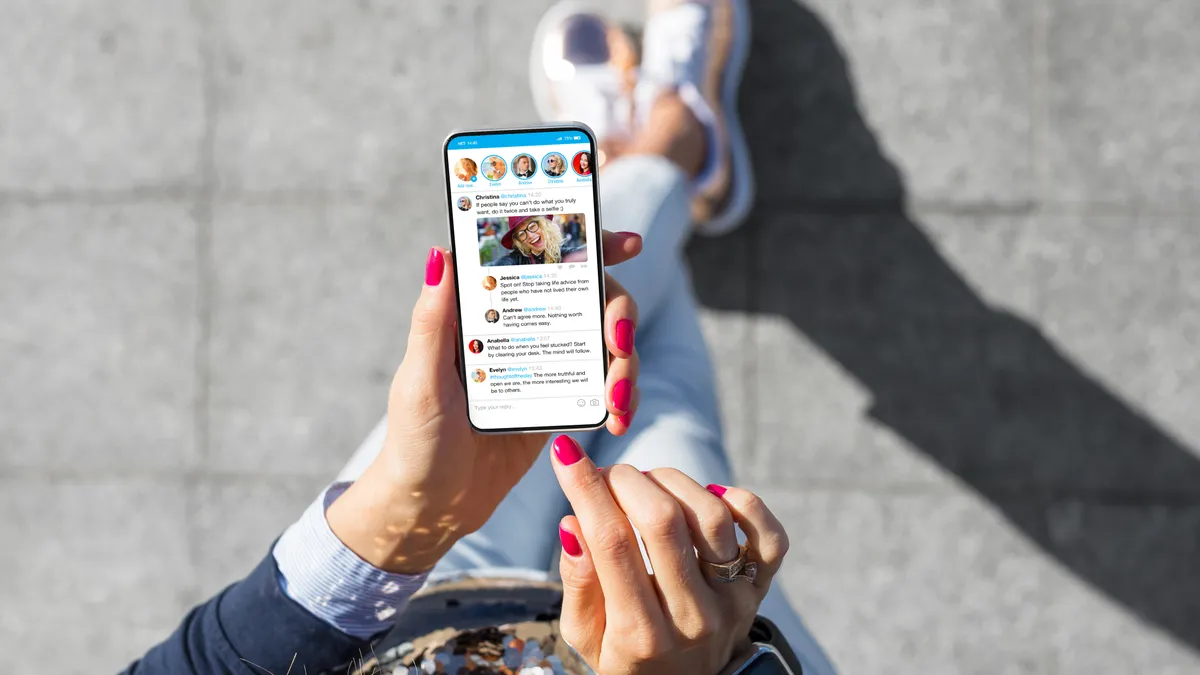Despite turmoil at Twitter, social media isn’t going away anytime soon. Platforms like LinkedIn, Instagram, TikTok and Facebook can be powerful ways for HR professionals to recruit new talent and find candidates they wouldn’t have reached otherwise.
Using social media for recruitment is “a constant strategy around marketing the organization and what we stand for, not just the business value but the social and cultural impact that we have,” said Steven Kramer, CEO at Workjam, a digital front-line workforce platform.
While social media doesn’t replace traditional recruitment methods, recruiting on such apps and websites can enhance hiring methods — with some caveats, including treating social media as a way to funnel candidates into the hiring process, not a way to completely replace it.
Use social media to tell a story
Workjam’s approach to recruiting on social media goes far beyond just posting links to open jobs. The company primarily uses LinkedIn, Instagram and Facebook to “tell our story,” said Kramer. It’s not just about paying to advertise open jobs on social media (which the company does), but using social media to market what it’s like to work at Workjam.
Workjam also makes it easy for employees to share these posts internally, and on their own social media networks with the ability to “personalize it based on what they want to say,” he said. The company has a referral program, which incentivizes employees to share posts and recruit someone from their own network.
The company continuously reevaluates which platforms it uses for recruitment and focuses on where potential employees are most likely to be. It doesn’t use Twitter that much, and it doesn’t use Snapchat, because that’s not “really our demographic we’re going after,” Kramer said.
Posting jobs on social media can also be used to create buzz around a company. In June 2022, Casper posted a job listing for professional sleepers. The idea stemmed from from TikTok, and the firm received thousands of applications. Those who got the job created social media campaigns for the mattress company. CPO Robert Lepere told HR Dive he aimed imbue his company’s work culture with thoughtfulness through this process.
Beware potential pitfalls
While social media is often treated like an informal communication platform, it shouldn’t be when used for recruitment, said Ayesha Whyte, employment attorney and chief people officer at Dixon Whyte.
“When you are speaking to someone through social media about a job, always tell them to apply formally,” she said. That ensures that every job candidate goes through the same hiring process. “Anything you say, even if it’s through social media, can come up later in an employment lawsuit,” she added.
She also advised that any photos or videos representing a company’s workforce be of actual employees, not stand-ins or models. “It would be horrible if a person of color or a person with disabilities saw a panoply of people in your ads about the workplace and then the workplace is homogenous,” she said. It may not lead to a lawsuit, but a company could lose that worker if they feel they were tricked.
On the flip side, employers should also take any social media presence of potential employees with a grain of salt. “That’s not giving the entire picture of who someone is,” she said. “That’s a filtered persona and you’re looking for an actual person who’s going to look at your job.”
While looking at someone’s social media presence isn’t a bad idea, it shouldn’t take the place of interviews, reference checks and background checks if that’s part of the regular recruitment process, she said. And relying too heavily on social media might mean missing candidates who aren’t social media savvy, she added; “You might be missing out on some wonderful candidates.”
Human resources professionals should also make sure they’re compliant with any pay transparency laws when posting job listings on social media. “If you are broadcasting on social media, that is going to be global. You have no idea where this candidate is looking from,” Whyte said. “If you’re advertising an actual job on LinkedIn or Instagram or anything, it should absolutely [include a] salary or salary range for that position.”




















